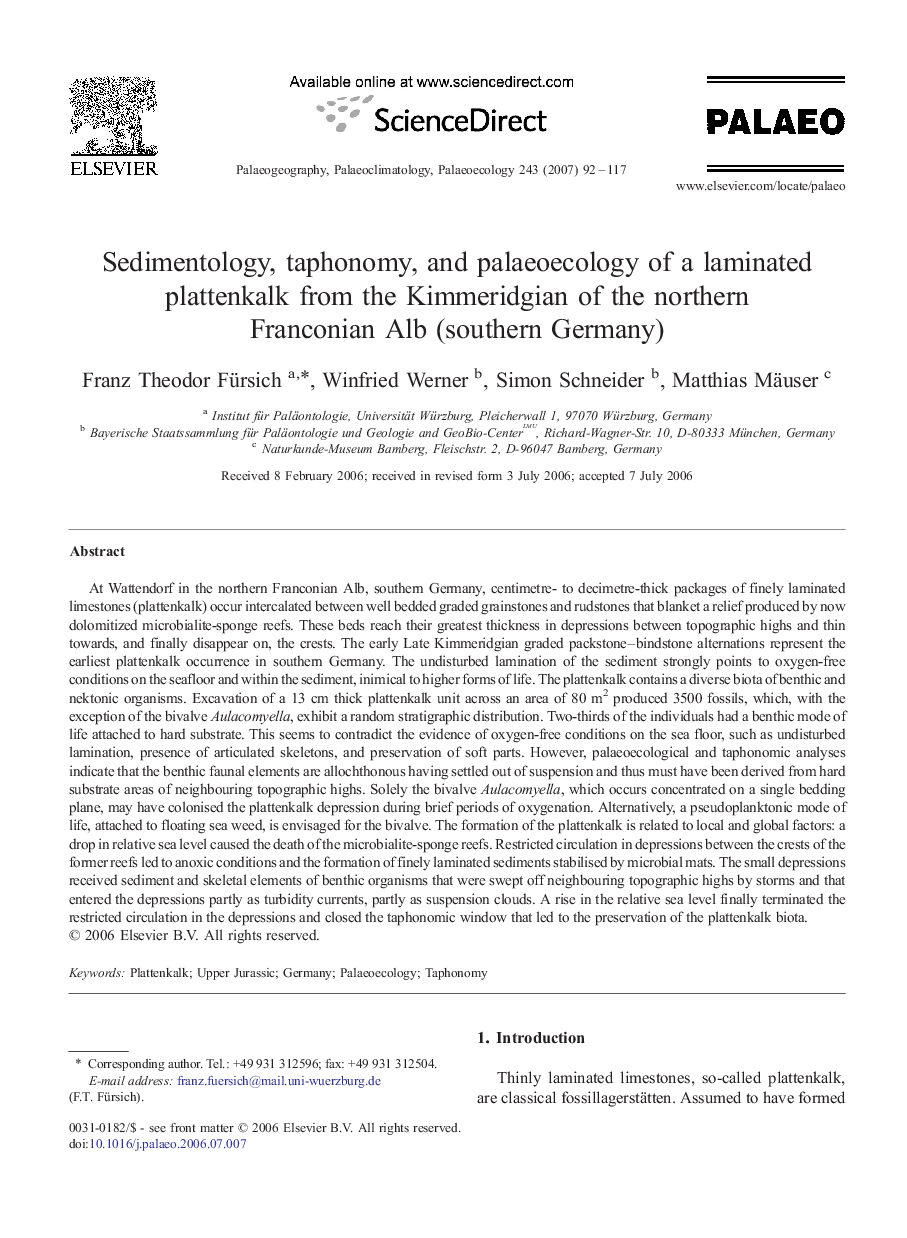| کد مقاله | کد نشریه | سال انتشار | مقاله انگلیسی | نسخه تمام متن |
|---|---|---|---|---|
| 4468989 | 1622361 | 2007 | 26 صفحه PDF | دانلود رایگان |

At Wattendorf in the northern Franconian Alb, southern Germany, centimetre- to decimetre-thick packages of finely laminated limestones (plattenkalk) occur intercalated between well bedded graded grainstones and rudstones that blanket a relief produced by now dolomitized microbialite-sponge reefs. These beds reach their greatest thickness in depressions between topographic highs and thin towards, and finally disappear on, the crests. The early Late Kimmeridgian graded packstone–bindstone alternations represent the earliest plattenkalk occurrence in southern Germany. The undisturbed lamination of the sediment strongly points to oxygen-free conditions on the seafloor and within the sediment, inimical to higher forms of life. The plattenkalk contains a diverse biota of benthic and nektonic organisms. Excavation of a 13 cm thick plattenkalk unit across an area of 80 m2 produced 3500 fossils, which, with the exception of the bivalve Aulacomyella, exhibit a random stratigraphic distribution. Two-thirds of the individuals had a benthic mode of life attached to hard substrate. This seems to contradict the evidence of oxygen-free conditions on the sea floor, such as undisturbed lamination, presence of articulated skeletons, and preservation of soft parts. However, palaeoecological and taphonomic analyses indicate that the benthic faunal elements are allochthonous having settled out of suspension and thus must have been derived from hard substrate areas of neighbouring topographic highs. Solely the bivalve Aulacomyella, which occurs concentrated on a single bedding plane, may have colonised the plattenkalk depression during brief periods of oxygenation. Alternatively, a pseudoplanktonic mode of life, attached to floating sea weed, is envisaged for the bivalve. The formation of the plattenkalk is related to local and global factors: a drop in relative sea level caused the death of the microbialite-sponge reefs. Restricted circulation in depressions between the crests of the former reefs led to anoxic conditions and the formation of finely laminated sediments stabilised by microbial mats. The small depressions received sediment and skeletal elements of benthic organisms that were swept off neighbouring topographic highs by storms and that entered the depressions partly as turbidity currents, partly as suspension clouds. A rise in the relative sea level finally terminated the restricted circulation in the depressions and closed the taphonomic window that led to the preservation of the plattenkalk biota.
Journal: Palaeogeography, Palaeoclimatology, Palaeoecology - Volume 243, Issues 1–2, 10 January 2007, Pages 92–117